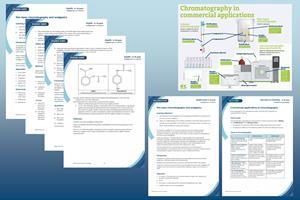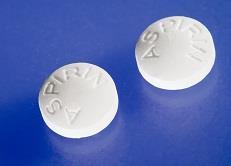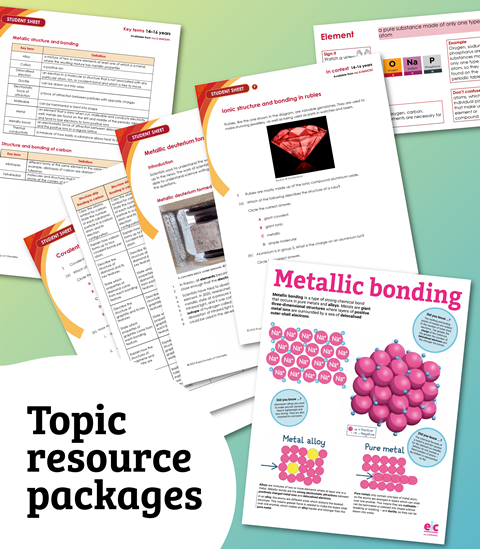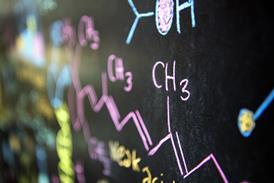Develop practical skills using thin-layer chromatography within the familiar context of over-the-counter painkillers
This activity is suitable for post-16 learners studying analytical techniques. It provides an opportunity for them to develop the experimental skills associated with thin-layer chromatography (TLC) set within the familiar context as they explore the ingredients in over-the-counter analgesics.
-

Download the resources pack
Find everything you need to plan and run this investigation, along with a Chromatography in commercial applications poster and factsheet.
Use this activity either as a stand-alone experiment on the technique of chromatography or towards the end of a 16–18 organic course as a synoptic activity introducing how organic molecules are used in medicinal chemistry.
Learning objectives
1 Use thin-layer chromatography (TLC) to separate and identify the components in over-the-counter analgesics.
2 Apply an understanding of the relative polarities of functional groups and how this affects their attraction to the stationary and mobile phases to predict how the Rf values of different compounds compare.
Follow-up questions 1–3 assess learners’ understanding of the experimental technique. Question 4 and the extension task require learners to be familiar with the common organic functional groups. Learners are challenged to consider the properties of the groups, specifically their effect on the overall polarity of the molecule and the impact this has on the molecule’s Rf value.
Introduction
Introduce the activity by discussing the use of painkillers and their other effects: antipyretic, anti-inflammatory and antirheumatic.
Establish which brands are most commonly used and use these in the analysis.
To get the most from the practical it is recommended that one of the analgesics for analysis is one that is known to contain either caffeine or aspirin or is a mixture of both.
Apparatus
- TLC plate – if the spots are to be viewed under a UV light, the coating must include a fluorescent indicator
- Pencil
- Test tubes in a stand along with a method of labelling the test tubes
- Capillary tubes for use as micropipettes
- Chromatography chamber; either a screw top jar tall enough to take the TLC plate, a small beaker with a Petri dish for a lid or a commercial tank
- Access to a fume cupboard or short wavelength UV lamp (around 254 nm) and UV safety screens
Chemicals
- Dissolving solvent (1:1 mixture of ethanol and dichloromethane)
- Aspirin reference solution: 1 g aspirin in 20 cm3 dissolving solvent
- Caffeine reference solution: 1 g caffeine in 20 cm3 dissolving solvent
- Sample analgesic tablets to be analysed
- Ethyl ethanoate as the mobile phase
- Iodine crystals (if using as alternative to UV lamp)
Safety and hazards
As with all experimental work in schools, you must carry out your own risk assessment in accordance with your employer’s health and safety policy.
- Read the RSC’s standard health and safety guidance
- Wear safety goggles
- Ethanol – DANGER highly flammable liquid and vapour, make sure there are no naked flames of other sources of ignition (see CLEAPSS Hazcard HC040a)
- Dichloromethane – WARNING causes skin and serious eye irritation, may cause respiratory irritation, may cause drowsiness or dizziness. Avoid breathing vapour and avoid contact with skin and eyes, ensure laboratory is well ventilated (see CLEAPSS Hazcard HC028 )
- Ethyl ethanoate – DANGER highly flammable liquid and vapour; causes serious eye irritation; the vapour may cause drowsiness or dizziness and may irritate the eyes and respiratory system (see CLEAPSS Hazcard HC043a)
- Iodine – WARNING harmful in contact with the skin and by inhalation. Very harmful to aquatic organisms. Avoid breathing vapour and avoid contact with the skin and eyes – use a fume cupboard if possible (see CLEAPSS Hazcard HC054)
- Short wave UV may cause skin cancer and eye damage. Ensure the aperture is fixed and directed away from eyes and skin. Avoid reflections from shiny surfaces. Use ultraviolet safety screens to screen the viewer from direct radiation. Consult CLEAPSS (GL127) or your local science safety advisory service for more details.
Method
You need two tlc plates and six capillary tubes as micropipettes. Make sure that you do not touch the surface of the tlc plates with your fingers during this activity. Handle the plate only by the edges, and use tweezers if possible.
Preparation of analgesic samples to be analysed
- Place half a tablet of each of the samples to be analysed on a piece of paper and crush it with a spatula.
- Transfer the sample to a small, labelled test tube and add 5 cm3 of the dissolving solvent.
- Warm gently in a warm water bath (35°C) to dissolve as much of the tablet as possible. Any residue is likely to be a binding agent: allow it to settle for a few minutes and use the clear solution from above any residue for sampling.
Analysis
- Take a TLC plate and place it powder side up on a clean flat surface. Using a pencil (not a biro or felt tip pen) lightly draw a line across the plate about 1 cm from the bottom. Mark off four equally spaced points, leaving an equal space between the end points and edge of the plate.
- You are provided with reference solutions which contain aspirin and caffeine respectively. Use two of the capillary tubes to spot samples of these reference solutions onto the first two points on the TLC plate. Allow the spots to dry and then repeat three more times. The spots should be about 1–2 mm in diameter. Label the spots ‘aspirin’ and ‘caffeine’.
- Using the same procedure described in step 2, spot a sample of each of the analgesic samples to be analysed onto the remaining two points on your TLC plate. Label each spot with the name of the analgesic.
- When all the spots are dry, place the TLC plate in the chromatography chamber, making sure that the original pencil line is above the level of the mobile phase – ethyl ethanoate. Put a lid on the tank and allow it to stand until the solvent front has risen to within a few millimetres of the top of the plate.
- Remove the plate from the chamber and quickly mark the position of the solvent front. Allow the plate to dry.
- Observe the plate under a short wavelength UV lamp through a UV safety screen and record the result by photographing or pencil.
- Place the TLC plate in a jar or beaker containing a few iodine crystals. Put a cover on the jar and warm gently on a steam bath until spots begin to appear. Do this in a fume cupboard if possible.
Conclusions
Draw an accurate diagram of your TLC plate to show how your results appear under UV light and in iodine. Write the name of the stationary phase and mobile phase alongside your diagram. Record the Rf values of aspirin and caffeine to two decimal places.
Which of the analgesic tablets tested contain aspirin, which contain caffeine and which, if any, contain other compounds?
Reflect on your analysis. Did you include the correct amount of each sample for it to be visible on the plate? Were your spots distinct? How might you change your experimental technique if you were to repeat the analysis?
Put this in context
Watch the video to find out how bioanalytical scientist, Claire tests new medicines in various stages of drug development to ensure they are robust and reliable before being released onto the consumer market.
Conclusions
- Analgesics containing aspirin should produce a spot corresponding to the known aspirin reference.
- Analgesics containing caffeine should produce a spot corresponding to the known caffeine reference.
- Any spots not corresponding to aspirin or caffeine represent other medicines such as ibuprofen and paracetamol.
Questions
- Why was it important to handle the TLC plate only by its edges throughout this activity?
- What was the purpose of the lid on the chromatography chamber?
- Why is it important to always record the stationary and mobile phases used when recording Rf values?
- Another common over-the-counter analgesic is paracetamol.
(a) Look at the chemical structures of aspirin and paracetamol. How are they similar? How are they different?
(b) Paracetamol is a more polar compound than aspirin.
i. Which functional group(s) in its structure makes it polar?
ii. In TLC, the stationary phase is more polar than the mobile phase. A sample of aspirin and a sample of paracetamol were analysed next to each other on the same TLC plate. Predict where the spot containing paracetamol would appear on the TLC plate compared to aspirin and therefore how the Rf value for paracetamol would compare to that for aspirin. Explain your answer.
Extension
Another common analgesic is ibuprofen.
Draw the skeletal formula for ibuprofen and identify the functional group(s) in the molecule.
How do you think its polarity compares to that of aspirin and paracetamol? How would you expect the Rf value of ibuprofen to compare with (i) aspirin and (ii) paracetamol?
Answers
Answers to all questions are provided in the teacher notes.
Additional information
These resources were originally compiled by David Lewis and edited by Colin Osborne and Maria Pack. The resource was updated in 2025 by Catherine Smith.
Aspirin book

This book contains eight free-standing activities that can be used singly or as a coherent package in a wide range of teaching and learning situations for both academic and vocational courses.
- 1
- 2
- 3
- 4
- 5
- 6
- 7
- 8
 Currently
reading
Currently
reading
Thin-layer chromatography and analgesics



































No comments yet